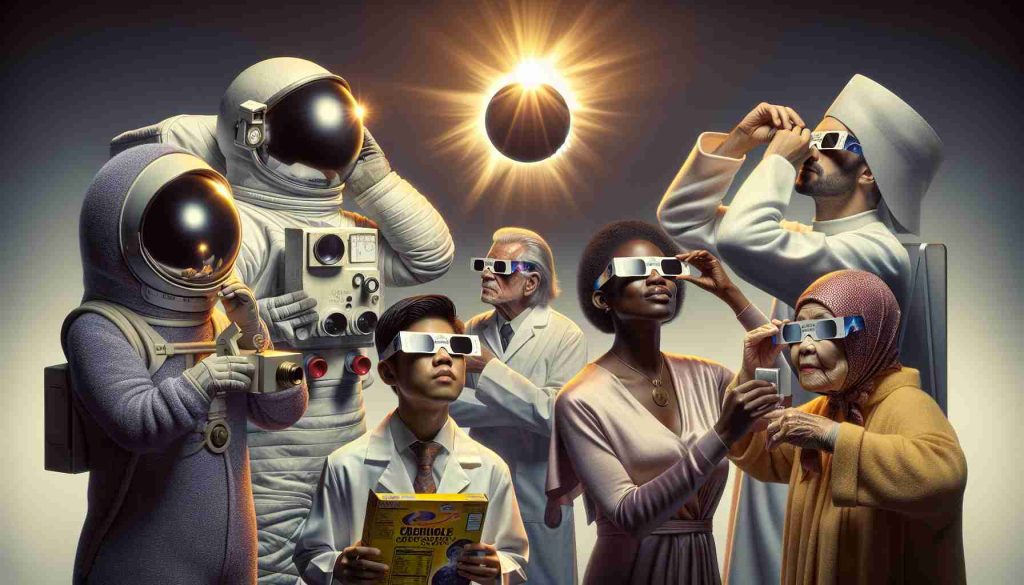
Ahead of the highly anticipated solar eclipse set to occur on April 8, 2024, experts advise enthusiasts to dress in two specific colors to enhance the viewing experience. This event, expected to draw widespread interest from astronomy aficionados and the general public alike, presents a unique opportunity to witness one of nature’s most stunning spectacles. In preparation for the date, the recommendation is to wear the colors red or blue, as they are believed to improve visual perception during the event.
There’s a palpable excitement surrounding the next total solar eclipse, as it will create a pathway of totality across North America. In a remarkable convergence of celestial mechanics and human perception, individuals looking forward to the event have received an unusual piece of advice: donning attire in shades of red or blue. According to experts in optics and atmospheric science, these colors are suggested, not for any superstitious reasons, but for the potential to enhance visual acuity and contrast.
The rationale behind this fashion tip may seem unconventional to some, but it stems from the idea that specific colors can influence the way we perceive contrast and depth. With countless viewers set to gaze upward, ensuring the most dramatic and memorable view is paramount. Therefore, while safety remains the top priority, with solar viewing glasses a must-have, adding a touch of color to your eclipse-day wardrobe could potentially make a good viewing experience great.
Research and reporting underscore the significance of this event, as total solar eclipses are rare occurrences that offer incredible insights into the dynamics of our solar system. While the color-of-clothing suggestion awaits further scientific endorsement, it stands as part of the broader conversation on how we can augment our sensory experiences during astronomical events.
The Solar Eclipse Market and Industry Insights
Total solar eclipses present immense opportunities not just for observers but for various industries as well. From tourism and hospitality, as travelers flock to the path of totality, to retailers selling specialized eclipse viewing equipment and memorabilia, the business around this astronomical event can be significant. The industry gears up for an increase in demand for solar viewing glasses, telescopes with solar filters, and eclipse-related educational materials.
With experts recommending red or blue clothing for viewing the eclipse due to their potential to enhance contrast, there’s a chance this could influence fashion trends and retail offerings as well. Apparel companies might leverage this advice to release special edition clothing lines tailored for the event.
Anticipated Market Growth and Forecasts
Market forecasts predict a significant surge in sales of related products as the event draws near. The astronomical community also stands to benefit, with increased interest potentially leading to higher funding for research and educational initiatives. However, accurate quantification of market value and growth can be complex, as it involves various sectors and fluctuates with each eclipse event. Stakeholders range from scientific institutions to small local businesses in the path of totality.
Issues and Challenges in the Eclipse-related Industry
Despite opportunities, there are challenges as well. Ensuring the availability and safety of viewing equipment is crucial. Past eclipses have seen shortages of certified solar viewing glasses and the circulation of counterfeit products that could endanger viewers’ eyesight. Additionally, managing the influx of tourists to often small or remote areas that lie in the path of totality can strain local resources.
Education around safe viewing practices is another concern. Misinformation can lead to eye injuries if proper protection isn’t used. Companies and authorities often engage in extensive campaigns to inform the public about the importance of using ISO certified eye protection.
For more information and updates on the upcoming total solar eclipse and tips on safe viewing practices, an authoritative source such as NASA can offer valuable insights. As interest in astronomical events grows, the market and related industries adapt and evolve to meet the needs of enthusiasts and professionals alike, while addressing the challenges inherent in such unique occurrences.
[embedded content]

Michał Rogucki is a pioneering figure in the field of renewable energy, particularly known for his work on solar power innovations. His research and development efforts have significantly advanced solar panel efficiency and sustainability. Rogucki’s commitment to green energy solutions is also evident in his advocacy for integrating renewable sources into national power grids. His groundbreaking work not only contributes to the scientific community but also plays a crucial role in promoting environmental sustainability and energy independence. Rogucki’s influence extends beyond academia, impacting industry practices and public policy regarding renewable energy.
